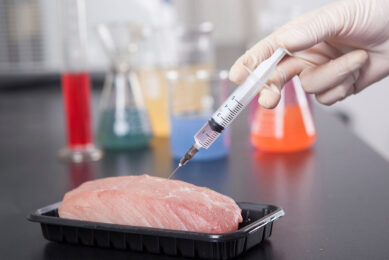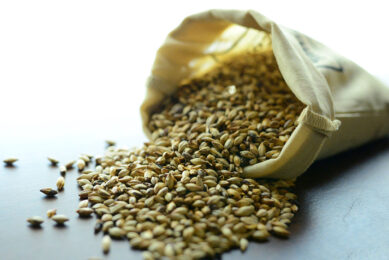Wrapping up the latest global feed updates

New feed additives, awards, tests and more. All About Feed wraps up the latest updates and new business developments from the global animal feed industry.
Feed mill of the year award to Mississippi
Sanderson Farms of Collins, Mississippi, has been named the 2017 Feed Facility of the Year (FFY). Gary Huddleston, AFIA’s director of feed manufacturing and regulatory affairs, announced the winner during AFIA’s Feed Education Program, being held today as part of the International Production & Processing Expo, happening this week in Atlanta, Georgia. Cosponsored by the American Feed Industry Association (AFIA) and Feedstuffs, the FFY award recognises overall excellence in feed manufacturing operations. It emphasises the company’s commitment to safety, quality, regulatory compliance and employee development and highlights the facility’s overall operating efficiencies. To date, only 32 facilities have received this industry best practices award.
New on-site test for soybean meal quality
Canadian Bio-Systems has launched FeedCheck Soy, a new tool that allows for rapid, on-site analysis of soybean meal quality. The test assesses the soybean meal samples for the presence of anti-nutritional factors such as trypsin inhibitors. It works by using a reaction reagent uniquely tailored to indicate the presence of residual urease, which is an indicator of the presence of trypsin inhibitors. The reagent indicates areas of high urease activity by changing those areas of the sample to a red-wine colour. Based on the degree and amount of colorization, users can clearly see whether levels of anti-nutritional factors are within optimal or low risk range, or whether there are issues related to under- or over-heating during processing.
DSM and Evonik establish Veramaris joint venture
Until recently, the omega-3 fatty acids EPA and DHA added to animal feed have been almost exclusively from marine sources such as fish oil and fishmeal, which are finite resources. This is why DSM and Evonik have established a new company, Veramaris V.O.F., for the production of omega-3 fatty acids EPA and DHA from natural marine algae for animal nutrition. The 50:50 joint venture is headquartered at the DSM Biotech Campus in Delft (Netherlands). Commercial quantities of the algal oil rich in the essential omega-3 fatty acids EPA and DHA will be ready for sale in 2019. Pilot quantities for market development purposes are already available. The initial annual production capacity will meet roughly 15% of the total current annual demand for EPA and DHA by the salmon aquaculture industry. Veramaris will be headed by CEO Karim Kurmaly and CFO Frank Beissmann.
Mycotoxins in corn and soy studied by Olmix
Animal nutrition company Olmix has run a large-scale study to evaluate the mycotoxin risk of the 2017 harvest of the top exporters of corn and soy. The study included samples of raw materials collected from feed mills or collecting centers in order to obtain a good overview of different origins and of the local harvests. All samples were tested for the major mycotoxins with the ELISA micro wells method. The corn study focused on USA, Brazil, Argentina and Ukraine. The corn samples show a low risk in aflatoxins, while fusariotoxin (DON, fumonisins and zearalenone) polycontamination was more frequent. Zearalenone was frequently found, which is of concern for breeding animals. Fumonisin risk is not very high in the USA and Ukraine. On the other hand, South American samples are very much contaminated with 45% of the samples containing more than 2000ppb of fumonisins. 14% of the US corn samples, 18% of South American and 20% of the Ukrainian corn samples contain more than 1000ppb of DON. The soy samples coming from the USA and Brazil also show a low risk in storage mycotoxins (ochratoxins and aflatoxins), on the contrary to fusariotoxins. More than 60% of the soy samples from Argentina contain more than 50ppb of T-2/HT-2 toxins, which are highly toxic trichothecenes. Zearalenone was also frequently found in soy samples, with more than 75% of the samples containing more than 100ppb which is a highly hyperestrogenic toxin. Fusariotoxins polycontamination is common.
Neovia partnership with Naturex
Neovia and Naturex are strengthening their scientific collaboration and are announcing the signature of a long-term research partnership. This partnership will enable the two companies to combine their activities to develop new natural and innovative solutions that meet the needs of the animal nutrition and health market. Naturex is a French company whose global headquarters are located in Avignon. Created in 1992, the company currently has over 1700 employees, 16 production units and a turnover of over € 400 million. As the world leader in natural botanical ingredients, Naturex benefits from a high-tech know-how in plant extraction and produces ingredients which meet the specific needs of the food production, nutraceutical and cosmetics industries. The signature of this partnership enables Naturex and Neovia to join forces to study and develop new natural and innovative animal nutrition and health solutions, either directly or with their subsidiaries and activities.
HR award for Kemin Industries
Kemin Industries has been recognised – “Best Companies to Work for in Asia (Singapore Chapter) Award 2017” – by HR Asia for its Kemin Asia Pacific business unit. The award was judged by an independent panel of industry experts, academics, journalists and government representatives with reference to the HR Asia Employee Input Survey™ (EIS) Report and the HR Asia Workplace and Employee Engagement Survey™ (WEES), whereby a diverse group of qualified Kemin employees had participated.
Pancosma and BASF enforce efforts regarding ip rights
Pancosma SA and BASF SE have intensified their efforts to enforce their intellectual property rights for their innovative metal-glycinates. In mid-September 2017, a second lawsuit was filed against a potential patent infringer at the district court of Düsseldorf, Germany, which is still on-going. In October 2016, both companies had initiated legal action by filing lawsuits against potential patent infringers at the same district court. Pancosma and BASF’s metal-glycinates are trace elements organically bound to glycine, e.g., copper, iron, manganese and zinc for use in animal feed. The metal-glycinates offered by both companies are patent protected due to their unique chemical structures and the technology that is used to produce them.
AB Vista launches phytate reference guide
Animal nutrition technology company AB Vista has launched the animal feed industry’s first phytate reference guide. This guide will contain details of average phytate levels for a range of raw materials available across the world. Knowing the phytate content of ingredients and feed can help producers exploit the extra-phosphoric effects of phytases, by targeting the complete breakdown of phytate in the diet. This insight or ‘feed intelligence’ can help nutritionists identify the phytase application which will deliver the best return on investment. For more information contact info@abvista.com.
Join 26,000+ subscribers
Subscribe to our newsletter to stay updated about all the need-to-know content in the feed sector, three times a week. Beheer
Beheer









 WP Admin
WP Admin  Bewerk bericht
Bewerk bericht